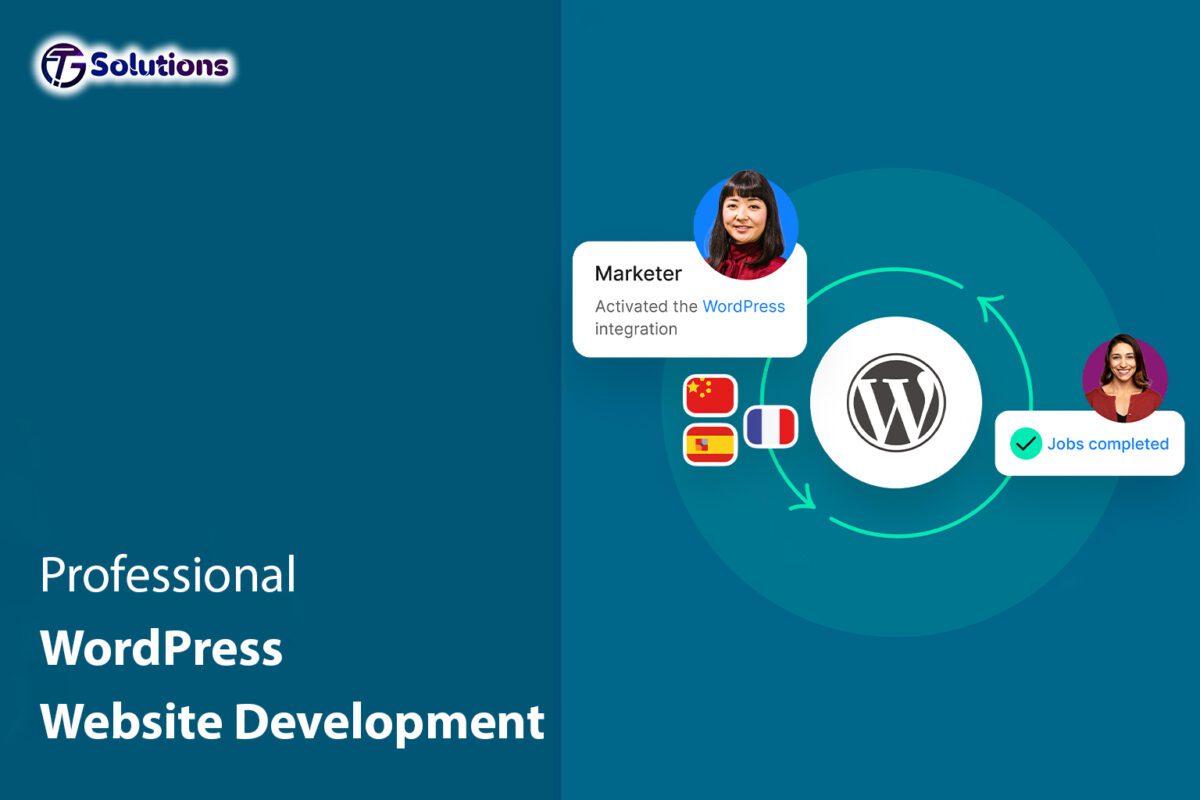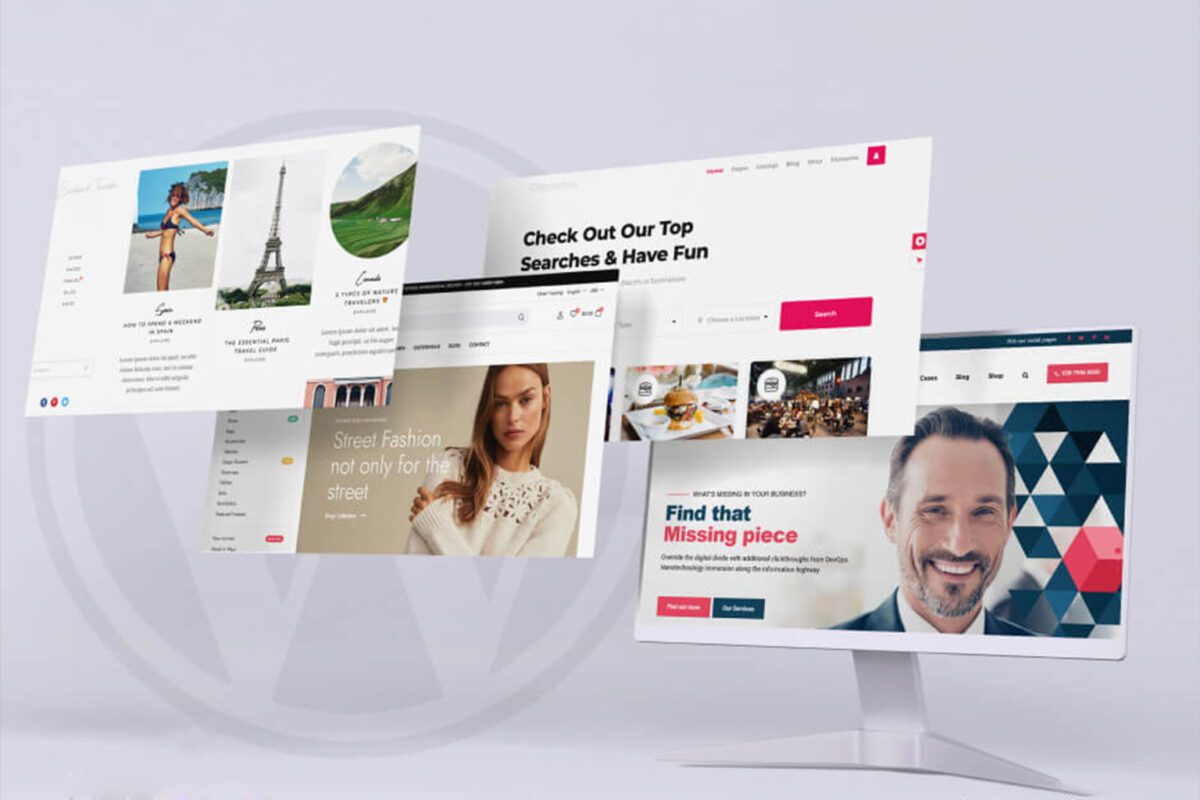Creating a Profitable Website (And Grow Your Business)

There is no doubting the importance of a top-notch website for growing your clientele and boosting revenue. But, creating a website and using marketing strategies to direct traffic there are insufficient. A website must provide an excellent user experience in terms of content or general usability in order to be successful. How then can you provide visitors with such outcomes? Let’s investigate.
Top 10 Considerations for a Successful Website
As of 2023, there were more than 1.98 billion websites in operation across all business verticals (Source: firstsiteguide.com). And, with new websites being added to the list on a daily basis, the competition is heating up. In the following section, we discuss the top eight ways to make your website stand out and be successful. In addition, if you want to create a new website or redesign an existing one, you can read our blog about the latest web design trends.
1. Clearly define your Goals
When developing a website, it is critical to define goals from both the company’s and the users’ perspectives. Remember that your website can only deliver the goods (traffic, leads, and sales) if it provides what your target users desire. For example, if you are a website designer and one of your goals is to provide a seamless browsing experience to your users, ensure that your website design is intuitive and that users can easily find every service or piece of information. Also, if your website’s bounce rate is high, it may be a sign that your company’s and users’ goals are not aligned, and it is time to align them.
2. Create an appropriate budget.
Create a budget for your website while keeping aspects like design and marketing in mind. Going overboard in any of these areas can have unintended consequences. Choose the type of website you want to build (e-commerce, educational, portfolio, blog, entertainment, etc.) and the appropriate CMS platform (WordPress, Joomla, Drupal, etc.). Consider the advantages and disadvantages of purchasing an off-the-shelf template-based website versus a custom-designed one. Consider the breakeven point when deciding on the initial investment and subsequent incremental investments. You can learn more about the factors that influence the cost of website development by reading this blog.
3. Determine Your Target Audience
Defining your target audience is a critical step in ensuring your website’s success. By determining who you want to reach, you can tailor your content and marketing efforts to better engage and appeal to your target audience. When defining your target audience, consider factors such as age, gender, income level, education level, and geographic location.
4. Gain the audience’s trust
Create a website that highlights your offerings in a clear and transparent manner. Understand what your target audience is likely to do when they visit your website. Make use of your skills and knowledge of what motivates your target audience. Make your website credible in order to gain visitors’ trust by including relevant and comprehensive information, such as on the About Us page. Instead of thinking you’re just another website in cyberspace, your target audience should know who they’re dealing with. Using images and mentioning your company’s philosophy, mission, vision, and culture, tell a credible story about it. Finally, your website should give the impression of legitimacy before shoppers can gain trust and share their credentials, including credit card information.

5. Produce High-quality, Relevant Content:
Content is the foundation of any website. Creating high-quality, relevant content is critical to any website’s success. Providing useful, informative, and relevant content can help keep visitors interested and returning to your website.
To entice readers, make sure your headlines accurately reflect the content of your article and use actionable language. Including multimedia in your content, such as images, videos, and infographics, can help break up long blocks of text and make it more engaging. Updating your website on a regular basis with new, high-quality content can help keep visitors coming back and improve your search engine rankings.
6. Look for ways to distinguish yourself.
Being different from others is the key to standing out in the competition. This can happen even if you use a ready-made website template. Simply tailor the imagery and styles to your brand’s needs to stand out. Telling your story will set you apart from other templated websites selling similar products or services. Create a connection with your target audience by emphasizing factors such as quality, price, customer service, how you give back to society and channel your profits to worthy causes, and so on.
7. User experience and usability
When visiting your website, your target users should not have difficulty accessing information, products, or services. Create appropriate landing pages that they can reach with as few clicks as possible. For example, if you run a news website, direct visitors to a page that displays the day’s top news headlines. In addition to maintaining an intuitive main menu for seamless navigation across mobile and desktop devices, make the search boxes easily visible. Don’t assume that your target users will travel a long distance to access their favorite content. They will abandon the journey if it is too long and circuitous.
Similarly, your website must load quickly. That means it must also have a high Core Web Vitals score. As a result, ensure that your website is coded correctly.
8. Concentrate on SEO fundamentals
The right SEO strategy can boost your website’s visibility on Search Engine Result Pages (SERPs). Understand how search engine bots crawl and index your website’s content. Also, make certain that the basic on-page elements (headers, title tags, Meta descriptions, and so on) are optimized. This can be accomplished through the use of semantic coding and plug-ins. Although SEO extends beyond on-page elements, if you can customize all on-page elements according to search engine norms, you will not only fully represent your content to search engine bots but will also ensure that they crawl and index your website properly. This can eventually mean that you have won half the battle for success.
9. Gain knowledge from heat mapping
Heat mapping can be a valuable source of information about the user experience. Remember that many factors influencing your website’s success are related to the user experience. So, using appropriate tools, you can gain insights into user activities on your website, such as how far they scroll, how much they fill out the form before leaving, where their mouse hovers, and where they get stuck, and so on. Once you’ve identified the problem areas, you can address them and fine-tune the website to ensure smooth navigation.
10. Reduce or eliminate problems
Your website may have issues or bugs that significantly reduce its performance. These may include, among other things, buttons that do not work, portions of JavaScript that do not execute, and UX issues with mobile. Furthermore, while updating a plugin via CMS admin, you may have broken something. So, while you’re busy analyzing figures on the sales dashboard, you might miss the fact that some users are having problems. These users will not inform you of their problems and will simply leave. As a precaution, ensure that the code is functional and has been tested across browsers. Monitoring and analyzing the performance of your website is also an important part of ensuring its success. Key metrics such as website traffic, conversion rates, and bounce rates can be tracked using tools such as Google Analytics. It will be easier to identify and fix problems if you can track down problematic pages (such as those with high bounce rates or low conversion rates).
Conclusion
While user experience is important in determining the success of your website, it is also important to use technology, insights, and feedback to optimize your website. Each of the aforementioned factors can contribute significantly to the success of a website. As a result, it’s time to hire an experienced and reputable web design firm to help you achieve your goals.











